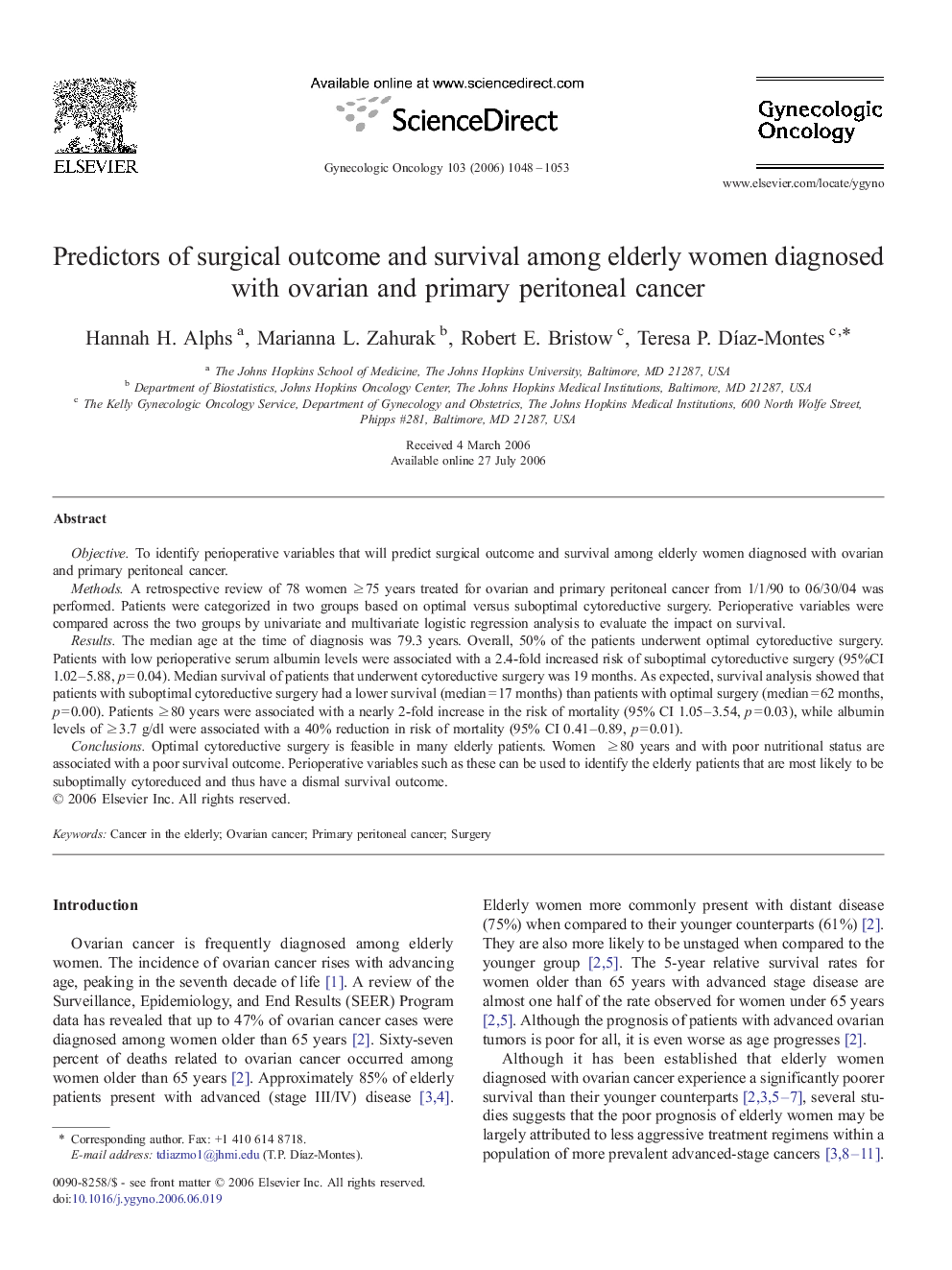| Article ID | Journal | Published Year | Pages | File Type |
|---|---|---|---|---|
| 3943667 | Gynecologic Oncology | 2006 | 6 Pages |
Objective.To identify perioperative variables that will predict surgical outcome and survival among elderly women diagnosed with ovarian and primary peritoneal cancer.Methods.A retrospective review of 78 women ≥ 75 years treated for ovarian and primary peritoneal cancer from 1/1/90 to 06/30/04 was performed. Patients were categorized in two groups based on optimal versus suboptimal cytoreductive surgery. Perioperative variables were compared across the two groups by univariate and multivariate logistic regression analysis to evaluate the impact on survival.Results.The median age at the time of diagnosis was 79.3 years. Overall, 50% of the patients underwent optimal cytoreductive surgery. Patients with low perioperative serum albumin levels were associated with a 2.4-fold increased risk of suboptimal cytoreductive surgery (95%CI 1.02–5.88, p = 0.04). Median survival of patients that underwent cytoreductive surgery was 19 months. As expected, survival analysis showed that patients with suboptimal cytoreductive surgery had a lower survival (median = 17 months) than patients with optimal surgery (median = 62 months, p = 0.00). Patients ≥ 80 years were associated with a nearly 2-fold increase in the risk of mortality (95% CI 1.05–3.54, p = 0.03), while albumin levels of ≥ 3.7 g/dl were associated with a 40% reduction in risk of mortality (95% CI 0.41–0.89, p = 0.01).Conclusions.Optimal cytoreductive surgery is feasible in many elderly patients. Women ≥ 80 years and with poor nutritional status are associated with a poor survival outcome. Perioperative variables such as these can be used to identify the elderly patients that are most likely to be suboptimally cytoreduced and thus have a dismal survival outcome.
